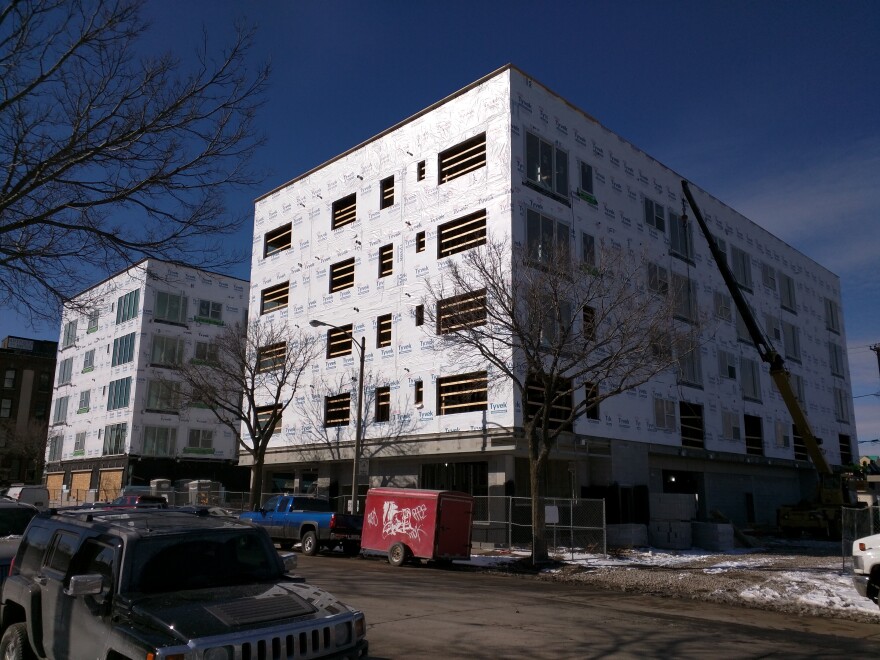
Milwaukee's harbor district appears to be a jumbled mix of old industrial buildings, ship docks, railroad tracks and a sewage treatment plant. But the City is brewing up a plan to transform the 1,000 water-edged acres.
Today, you see glimmers of transformation. An apartment building rising at 1st and Washington. Freshwater Plaza popping up, complete with grocery store and office space.
To the east, where Greenfield Avenue bumps into the harbor, UWM’s School of Freshwater Sciences is wearing a multi-million dollar do-over.
Steps in the right direction? Sure! But Harbor District, Inc.'s Dan Adams wants to inspire others to imagine what the district could become.

Harbor District, Inc.'s role is to keep stakeholders, from businesses to residents, involved in the plan the City is crafting.
Adams says creating public access is a both critical and daunting. “We have nine miles of waterfront in the harbor district. You can wiggle between buildings and see the water, but [the Milwaukee County Boat Launch] is the only spot you can actually get down to the water’s edge,” he says.
A few months ago, four teams of designers from the U.S. and Canada came here to add their vision to the space.
“They were looking harbor district-wide... extending the River Walk down into the harbor district with environmental restoration, wetland reclamation – all mixed in with the public access,” Adams says.

As you travel along South Water Street, the district changes drastically, he says. “From the mixed use and warehouse, lofty neighborhoods at the northern edge of Walkers Point quickly into this and there’s asphalt tanks up ahead,” Adams says.
He says the idea is to maintain that mix of industry-at-work and neighborhood. “All day there’s freight coming back and forth along here. It is heavily used, so the question is where can efficiencies be found,” Adams says.

A jog north on Greenfield Avenue, a former heavy industrial site, the old Solvay Coke and Gas Company swallows 45 harbor acres. Although Adams described the site as “the largest swath of nothing in the middle of the harbor district," in his eyes, the contaminated blemish is a “large opportunity.”
"There’s some buildings on that that need to be razed. It is listed as an EPA alternative Superfund site,” Adams explains. “My understanding it’s a step below a Superfund site. Doesn’t have quite as many challenges but there’s still a bureaucratic process to go through to figure out what the contamination is, who’s responsible and how it gets clean up. So that process is underway right now.”

To the east, there are 13 acres could rebound much more quickly, he says. For decades, it held piles of coal that fueled We Energies Valley Power Plant. Adams says a design frenzy unfolded when the visiting teams considered the potential, such as an experimental wetland.
“They would allow water into the middle of the site through a controlled dam structure and you could recreate different wetland environments to test out different plant ecologies that you might use to restore waterways up river,” Adams says.
He says for decades storm water has taken a toll on the harbor. “The way it stands right now, a lot of the properties immediately adjacent to the water are allowed to kind of let their storm water run right into the waterway,” Adams says.
The revitalization vision would incorporate state-of-the-art green strategies to slow down and cleanse incoming storm water.

On Jones Island, part of its 256-acres holds sewage treatment facilities. The island too could be pivotal both economically and ecologically. Adams says designers suggest adding shipping docks and a natural buffer.
“Ecological breakwaters, that one: provide additional protection for the harbor and the shipping activity by soaking up the wave energy from the lake; but two: provide additional natural habitat for birds. for fish and for plant life,” Adams adds, “and possibly even additional green space for you and me to go out there and walk along and get these beautiful views of Milwaukee’s downtown and the harbor district.”
While distilling the most promising ideas into an achievable plan seems a gargantuan task, planners also hope to win over a bevy of stakeholders.
Sixty percent of the harbor’s 1,000 acres is chopped up among several hundred individual owners.










